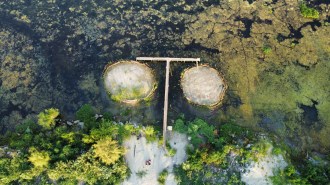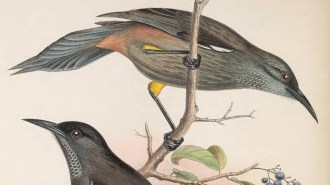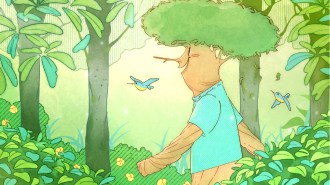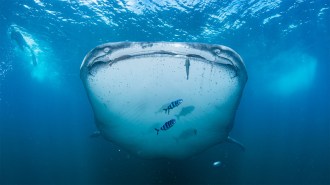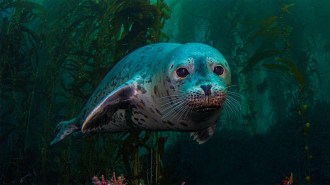New Farmers: Salt marsh snails plow leaves, fertilize fungus
People and insects aren’t the only creatures on the planet that can grow a fungus for dinner. A salt marsh snail works the leaves of a plant in what researchers say looks like a simple form of farming.
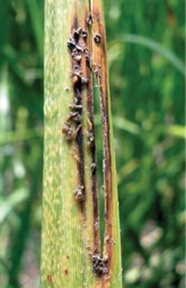

The snail Littoraria irrorata saws long gashes down the narrow leaves of the dominant plants in East Coast salt marshes. It doesn’t eat the fresh tissue but instead waits until fungus riddles the leaf wound, explains Brian Silliman of Brown University in Providence, R.I. Snail droppings boost the amount of fungus that grows in the cut, say Silliman and Steven Y. Newell of the University of Georgia Marine Institute on Sapelo Island. They report in an upcoming Proceedings of the National Academy of Sciences that the snails need to eat fungus to thrive.
Previously, biologists had observed cultivation of edible fungus only in some beetles, termites, and ants (SN: 4/24/99, p. 261). The snail behavior “seems to be the first time fungal farming has been found outside of insects–and the first time in a marine system,” says Silliman. “Fungal farming may be more widespread than we thought.”
Snails graze in abundance on sick and dying cordgrass (Spartina alterniflora). When Silliman removed the snails, the marsh produced a burst of growth, or “a chia pet of cordgrass,” as he puts it. He concluded that the snails had been somehow depleting the plants.
Piece by piece, Silliman and Newell tested the idea that the snails use the plants as real estate for fungus farming. In salt marshes on Sapelo Island, when the researchers removed snails from cordgrass leaves, the fungal infections were less extensive than when snails were present. After the researchers themselves cut leaves and applied snail droppings, the fungal biomass was almost double that on leaves protected from snail droppings.
Snails permitted to feed only on undamaged leaves barely grew, and 48 percent of their young died. However, snails thrived on fungus-only diets, and only 3 percent of their offspring perished. “It’s about the fungus,” Silliman concludes.
A specialist in ant farming, Ulrich Mueller of the University of Texas at Austin says, “What I find most remarkable is that [the snail] is a nonsocial species.” Farming therefore may not require social interactions. Mueller also welcomes the snail findings as perhaps a rare example of early stages of farm evolution.
The work also has much to say about salt marsh ecology, says Don Strong of the University of California, Davis. According to “decades of received wisdom,” he says, “salt marshes were seen as completely bottom-up phenomena.” In that view, how much plant life arises at the bottom of the food chain ultimately determines how well the top animals flourish. Strong says that Silliman and his colleagues, in this and previous work, have upended that view.
****************
If you have a comment on this article that you would like considered for publication in Science News, send it to editors@sciencenews.org. Please include your name and location.
To subscribe to Science News (print), go to https://www.kable.com/pub/scnw/
subServices.asp.
To sign up for the free weekly e-LETTER from Science News, go to http://www.sciencenews.org/subscribe_form.asp.
